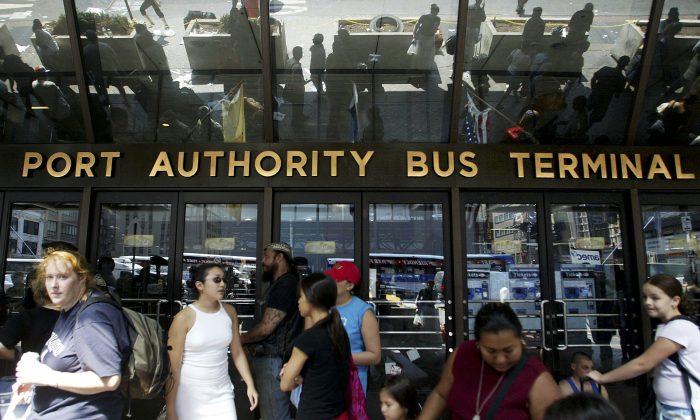A multi-billion dollar replacement of Port Authority, United States’s busiest bus terminal, was given the green light on March 24 by the Port Authority of New York and New Jersey (PANYNJ) board of commissioners.
“Building a new Port Authority Bus Terminal will be one of the largest and most important infrastructure projects in this agency’s history and across the nation,” PANYNJ Chairman John Degnan said.
The board plans to replace the station with a new state-of-the-art terminal—locating it near the current facility on Manhattan’s West Side.
Along with voting on the station itself, the board also voted to dedicate the necessary funds to complete the project’s construction, which will be established in the city’s 2017-2026 Capital Plan, the press release said.
“It’s no secret that the existing bus terminal is ill-equipped to meet the needs of passengers today, much less the needs of the future,” said Port Authority Vice Chairman Scott Rechler. “[We] will take into account the continued growth of the region, including the anticipated increase in traffic at the Lincoln Tunnel—as well as on New York City streets—making this a big step forward in developing a comprehensive solution for trans-Hudson passengers.
The current terminal, built in 1950 and expanded in 1979, accommodated 66 million passenger trips and 2.3 million bus movements in 2014, according to Port Authority statistics.
Currently, the station accommodates approximately 220,000 passenger trips and more than 7,000 bus journeys on an average weekday. But demand is expected to increase to as many as 270,000 daily peak-hour passengers by 2020, and as many as 337,000 daily peak-hour passengers by 2040.
“By committing to build a much-needed 21st century bus terminal on the West Side of Manhattan, with the understanding that no bus terminal will be built in New Jersey, we are making a crucial investment in our region’s economic growth,” said Degnan. “This is a vital service for the many thousands of riders who rely on this critical link for their daily commute for decades to come.”





Friends Read Free